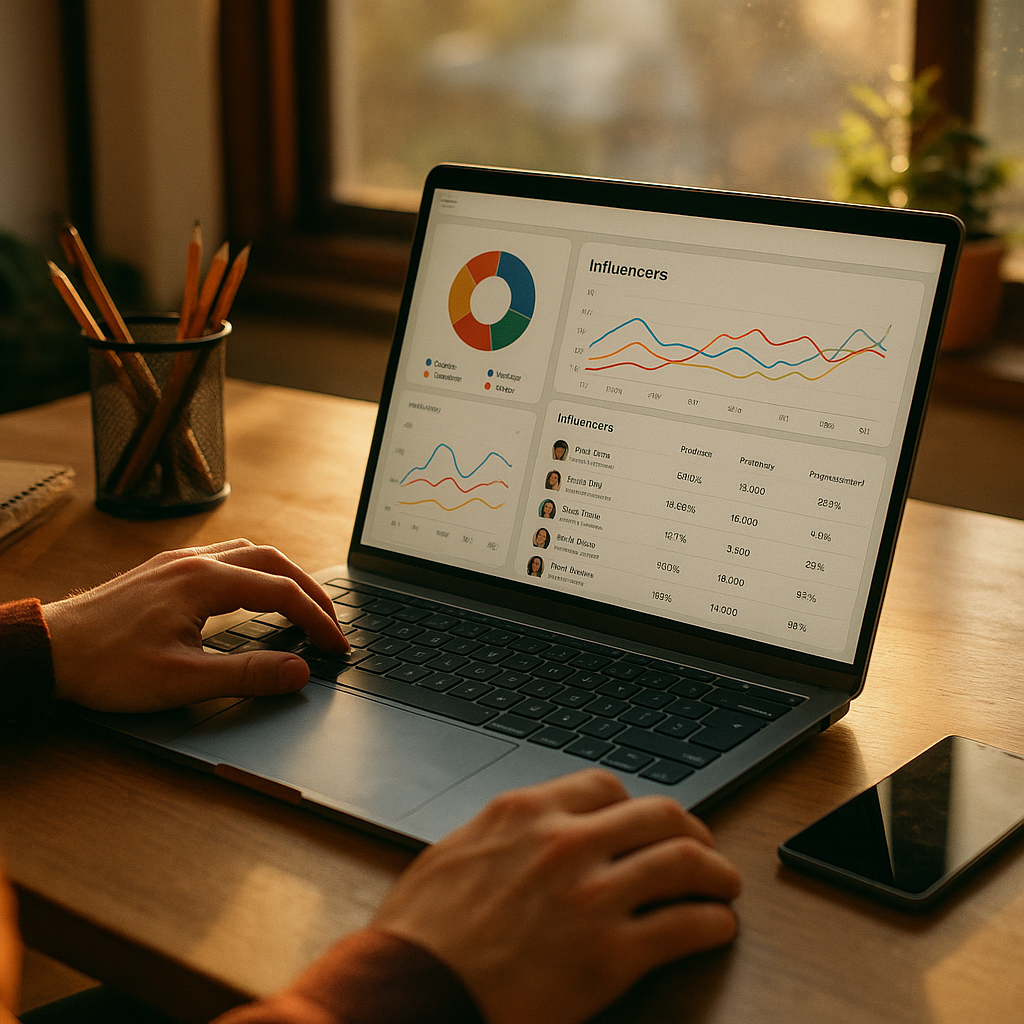The “Single Source of Truth” is now essential for influencer marketing analytics. By integrating influencer data into a central BI platform, brands can align strategies and outcomes based on reliable insights. Discover how unifying data enhances decision-making, improves ROI, and simplifies compliance for modern marketers looking to stay ahead in today’s data-driven landscape.
Why Centralized Influencer Data Drives Effective Decision-Making
Brands investing in influencer marketing often face fragmented data: disparate platforms, manual spreadsheets, and inconsistent metrics. A central business intelligence (BI) platform consolidates influencer metrics—reach, engagement, conversions—alongside media spend and campaign goals. This “single source of truth” ensures that every stakeholder works from the same up-to-date information, reducing miscommunication and guesswork.
Research from leading analytics firms in 2025 shows that marketers using integrated BI platforms report 38% faster decision-making and 20% higher campaign ROI. Centralized data allows teams to:
- Uncover high-performing influencers across all channels
- Spot trends that inform real-time adjustments
- Coordinate with finance, sales, and e-commerce teams seamlessly
This holistic approach means marketing leaders can prove influencer ROI with clarity and justify investments to executive teams.
Choosing the Right BI Platform for Influencer Reporting
Not all BI tools are created equal—especially when handling influencer metrics. When evaluating which platform best serves as your organization’s single source of truth, prioritize solutions offering:
- Flexible data connectors: Easily import data from Instagram, TikTok, YouTube, and influencer management platforms.
- Custom dashboards: Track campaign goals, influencer performance, and brand sentiment in real time.
- Advanced data governance: Ensure only authorized users can view or edit sensitive influencer contracts and budgets.
Ease of integration is a must. The best BI platforms offer low-code solutions and open APIs, eliminating manual work and ensuring data flows automatically as campaigns evolve. Look for platforms rated highly in recent Gartner or Forrester Wave reports for data visualization, scalability, and compliance support.
Integrating Influencer Marketing Data: Technical and Operational Steps
Seamless integration is pivotal in realizing the benefits of a “single source of truth.” Begin by auditing all data sources: influencer CRMs, social platforms, affiliate links, and legacy spreadsheets. Use ETL (Extract, Transform, Load) tools to automate data ingestion and normalization, transforming disparate metrics into unified formats for reporting.
Once integration is underway:
- Establish data quality rules to flag duplicates and outliers.
- Schedule automated updates to keep dashboards current.
- Assign data stewards to oversee governance and compliance (especially regarding privacy regulations and influencer payments).
Training is equally important. Empower teams with workshops focused on interpreting BI dashboards, fostering a data-driven mindset across marketing and adjacent teams. This operational buy-in is crucial for adoption and success.
Gaining Strategic Value: From Insights to Influence
With influencer data centralized, organizations can move beyond basic reporting—using AI-enhanced analytics for predictive modeling and advanced segmentation. Central BI platforms equipped with AI can forecast campaign outcomes, recommend ideal influencer collaborations, and even detect potential fraud or inauthentic engagement.
Real-world benefits include:
- Optimized spend: Pinpointing influencers and content types with the best cost-per-acquisition.
- Incremental lift analysis: Isolating the true value of influencer-driven sales from media mix modeling.
- Cross-channel synergies: Linking influencer touchpoints to other marketing initiatives, from email to in-store events, for a full-funnel perspective.
This elevated understanding empowers brands to refine creative briefs, negotiate smarter contracts, and deliver measurable impact to stakeholders.
Ensuring Data Security and Regulatory Compliance in 2025
Privacy regulations continue to evolve in 2025, making data compliance critical in influencer marketing. When integrating data into a central BI solution, brands must:
- Encrypt sensitive data on entry and in transit
- Utilize role-based access to restrict view/edit rights
- Maintain a clear audit trail for all influencer transactions and communications
Certification with leading standards such as ISO 27001 or SOC 2 is increasingly expected by enterprise partners. A secure, compliant BI environment not only protects your brand, but also builds trust with influencers and audiences alike.
Outlook: Future-Proofing Influencer Analytics in a Unified BI Platform
The pace of innovation means influencer marketing is becoming an integrated, always-on part of the marketing mix. As AI, shoppable video, and cross-platform measurement mature, data fragmentation will remain a risk—unless resolved via a single source of truth framework. Centralizing influencer data within BI platforms will ensure your strategy is agile, defensible, and ready for the next wave of digital transformation.
FAQs: Integrating Influencer Data into a Central BI Platform
- What is a “single source of truth” in influencer marketing?
It’s a unified data environment where all influencer metrics, performance stats, costs, and contracts are aggregated, ensuring every team references the same accurate, current information. - Can any BI tool handle influencer data integration?
Not all BI tools natively support influencer-specific metrics. Choose platforms with robust data connectors or custom APIs to streamline the process. - How does integrating influencer data improve campaign ROI?
Centralization allows for deeper insights, optimized allocation of spend, and rapid identification of high-performing influencers—leading to more agile campaigns and provable ROI. - Is influencer data integration secure and compliant?
Yes, when managed with appropriate encryption, role-based permissions, and audit trails—supported by leading BI platforms certified for privacy regulations in 2025. - Do I need IT staff to maintain integrated influencer BI dashboards?
Many modern BI platforms are designed for marketing users, with low-code integration and intuitive dashboards. Some IT support may be needed for initial setup or complex customizations.
Unifying influencer data within a central BI platform creates a robust “single source of truth.” This streamlines campaign analysis, drives strategic insights, and strengthens compliance—empowering marketers to deliver enduring value and outpace competitors in the influencer marketing landscape of 2025.
